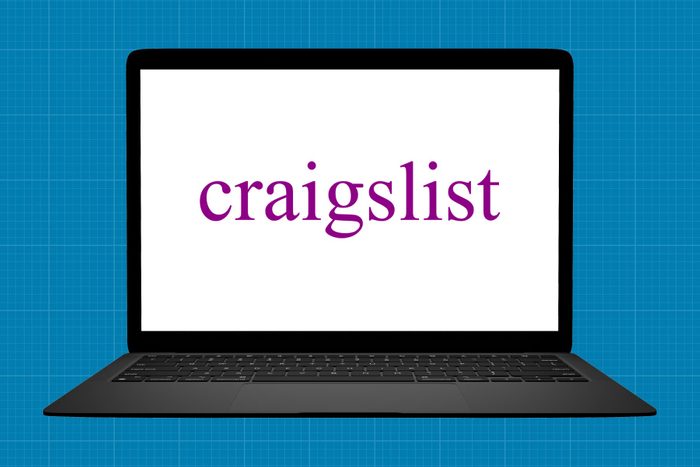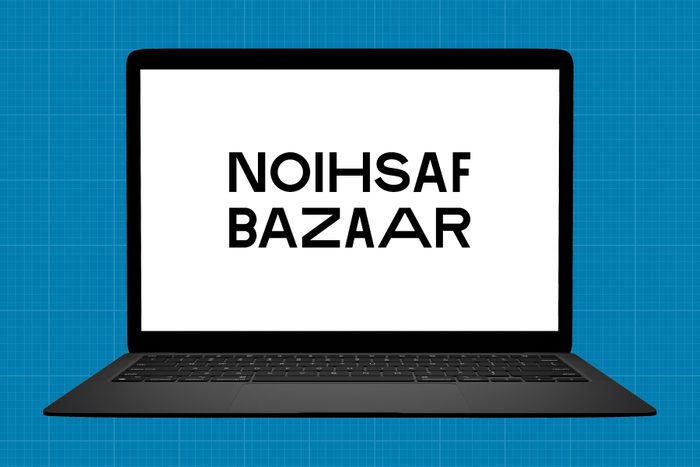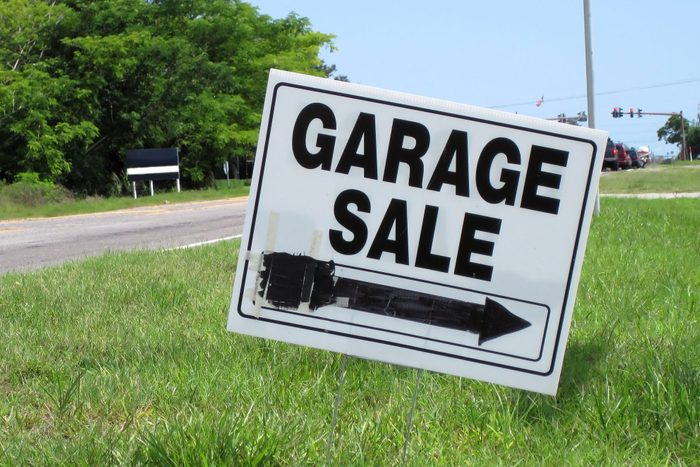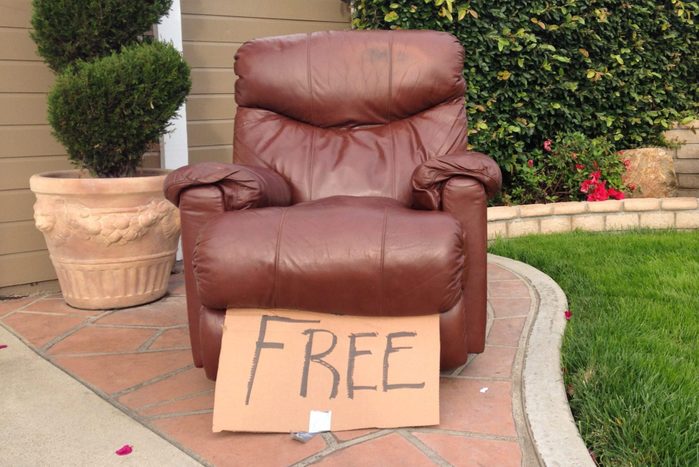Sell furniture like a pro with this guide to policies and platforms.
10 Tips on Where to Sell Furniture

Facebook Marketplace
Who would have known that one of the best places to find cool furniture pieces is. Facebook? But Facebook Marketplace is currently the platform where it’s all at.
“It has exploded,” Wright says. “It would be my No. 1 place to recommend over any other.”
That’s because there aren’t many barriers to get started, and there’s a big audience. You don’t need a business account (or to pay for one). It’s user-friendly. As of now, there are no fees for sales, and you can communicate with potential buyers via Messenger.
Initially, Facebook offered just a local audience. But it widened the playing field, allowing nationwide sales and even purchasing through the app. Buyers can search by location, from a few blocks to a few states away.
Note: Make sure to review their tax policies. If you use the purchasing software through Facebook, know the company will submit a 1099 form reporting your sales, which may impact your income taxes.
Also, check how to decide which furniture is worth keeping and how to get rid of unwanted furniture.

Craigslist
Craigslist offered arguably the first online classified ads. According to Wright, it “used to be the only game in town” for selling your stuff online, no matter what it was. But if you think it’s now a ghost town, you’re mistaken. “Diehards still use it, I still use it, and people who don’t really use social media still use it,” she says.
Although Craigslist isn’t quite as prolific as it once was, there’s still an audience for your goods there. As algorithms continue to befuddle many users, it’s a place to get listed that doesn’t compete with ads, promoted posts and Reels.

Noihsaf Bazaar
Noishsaf Bazaar began as a trend on Instagram. Then it moved to a full-fledged website teeming with hip vintage, new, sustainable, independent and emerging designer home goods — and fashion, too, hence the name.
Only the most intriguing brands (and photos) make the Noihsaf cut, so this platform is likely more for those selling regular furniture and home goods with an eye for what other people are looking for.
When you join Noishaf as a seller, listings are free, but Noihsaf takes a cut at the point of sale. They do include a handy seller’s guide on the site to determine if you’re a fit, and what makes a great listing.

NextDoor
NextDoor is the app to check about fireworks, neighborhood animal sightings, and … furniture? Kind of.
If you’re just looking to unload some furniture (most likely a basement couch) quickly, cheaply and hyper-locally, NextDoor can be a good avenue for you. These tend to be giveaways or have the feel of “an online yard sale,” Wright says.
“I have seen more expensive things on there, but it’s a smaller amount of people using the app and seeing the listings,” Wright cautions.
Adjust your price and audience expectations accordingly and your neighbor may just take your living room end tables off your hands — and pay you for it.

Chairish
If you’ve ever shopped furniture or Googled to see what a piece you own is worth, you’ve likely landed upon the expansive digital pages of Chairish. It’s beloved for its easy-to-use interface and incredible selection, but that comes with a price.
“It’s a really beautiful website and caters to both a lot of designers and people looking for provenance of something,” says Wright, who sells on the platform. It can be misleading, too. Sometimes people think the higher price tag on Chairish means it’s a better product, even if you can get the same item in the same condition much more cheaply on another platform, but perhaps with more digging.
The pricing is largely due to markup: “They take a huge percentage of item cost,” Wright says. If she lists something for $4,000 on Chairish, she takes home $2,200. “It really messes with item value,” she says, “but it is beautiful and appeals to people with expendable income.”

1stDibs
Wright calls 1stDibs “the cream of the crop for resellers in the home goods sector.” You may have longingly scrolled past its many beautiful but pricey items yourself as a buyer. But only a certain kind of furniture seller will work for 1stDibs.
“1stDibs is incredibly hard to get approved for,” she says. “It’s not for unloading one item.” Sellers must submit a portfolio and be an established dealer.
Another note about 1stDibs: Many sellers use it to determine the value of their goods. Not so fast, says Wright. These values reflect the most exacting standards of the product, which also often have a valuable provenance. They’re also priced to cover large markups the site takes from sellers, so it isn’t a great way to determine value.

Consignment/Vintage Shops
Going the consignment route can be fruitful, but Wright says to go in with your eyes open and expectations flexible.
In northern Virginia, for instance, there are only two consignment shops. That means shop owners can be extremely particular about what they will buy or consign. If it doesn’t match the aesthetic of the shop, or it’s big or not valuable enough, they’ll turn you away.
Consignment
There are specific considerations for consigning items. You need to know all the policies up front and what happens if your item doesn’t sell.
In some cases, the store gets the item and the profit. In others, if you don’t pick up the item when you’re notified, they also get the item and profit. And you must have a plan for taking it back. “You have to be OK with those policies,” she says.
Pricing is another consideration. “You don’t have much control over the pricing,” Wright says, noting you’d earn about 30% to 40% of the selling price. Also, items that aren’t selling are usually marked down about every three weeks, so the value you’ll get declines over time. Some shops, she says, will list your stuff on Facebook Marketplace for you and take a 50/50 split.
Vintage
Most of the time, Wright says, going to a vintage shop with an item and looking for them to buy it (to flip it) isn’t cost-effective for anyone. So it’s best to call ahead or email or text to test the waters.
“When people come in and say ‘I’ve got my mother’s XYZ,’ I’m very straightforward and tell them, ‘I’m happy to have this conversation with you, but I’m probably going to lowball and insult you,’ ” she says. ” ‘I’m not meaning to do that, but this is what I’m willing to pay because I know I can get something comparable if I use estate sales, auctions or thrifting.’ ”
She says for most vintage sellers, it’s all about the bottom dollar. That’s because the profit pays rent on a brick-and-mortar location, staff, cleaning, insurance and everything else that goes into running the shop. “Every nickel and dime makes a huge difference,” she says. Plus, many shop owners won’t buy one-offs, preferring to making larger purchases with collections or estates.
But if you’ve got something truly interesting, a shop owner might go for it. “If I know I have a market for it, I might take a chance,” she says.

Garage/Yard/Tag Sales
It’s an oldie but a goodie, as long as you’re not looking to make top dollar and want to get a little neighborhood socializing in. Just round up your goods, slap a sticker on them and display them in your driveway.
Some buyers are willing to pay a little more, even at garage sales, for good furnishings. Just don’t expect retail.

Buy Nothing
Buy Nothing groups, usually run through Facebook, encourage the giving of goods and services in lieu of traditional commerce. If you’re looking to get rid of something without making any money, this is a good option.
Customers know quality ranges and they’ll find a grab bag of offerings, “from yogurt to printers to furniture,” Wright says. “For my own conscience I don’t get something from Buy Nothing and turn and sell it.” But she has procured some great picks for her own space, from amazing fiberglass chairs to industrial stools.
“It keeps the circular economy going,” she says.

Donation
If your goal is to make a little cash, this isn’t the route to take. But it’s a worthy and efficient one, if you can afford it.
By donating goods to a local thrift shop or nonprofit organization that helps people furnish their homes, you’re giving back to your community. You get the good feeling from helping out, and you’ll likely get a receipt for tax write-off. Here’s everything you need to know about thrifted furniture.
Make sure to check what the thrift shop will take before showing up with your sofa, however. Many have specific and strict policies about certain types of furniture. Cribs and mattresses are often a no-go.



















